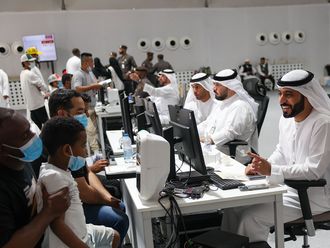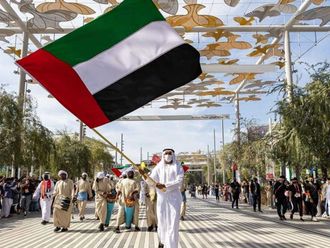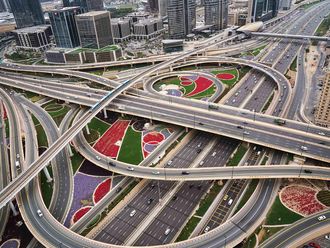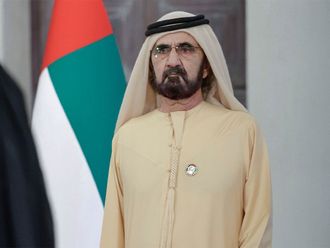
Dubai: Riders can now use a Bus On-Demand service in some Dubai areas allowing users to identify their routes from the start to the destination and pay the fare through a smart app.
Dubai’s Roads and Transport Authority (RTA) recently started the formal operation of the mini public bus service at several localities, including Al Barsha 1, Dubai Internet City, International City, The Greens, and the Dubai Silicon Oasis.
The formal running of services followed successful trials.
Passengers can hail the bus to any area within these select locations by app, without having to go to or wait by a bus a stop. They can then select their destination and pay through the the app, much like an e-hail taxi service.
‘Hot spots’
“The Bus On-Demand service is a mobility mode that contributes to easing the first and last-mile challenge. It involves deploying on-demand minibuses via a smart app in specific areas of Dubai. Following successful trials on this vital service, RTA decided to officially launch the service in certain communities. Selected areas have their own hotspots attractive to various community segments,” said Ahmad Bahrozyan, CEO of Public Transport Agency, RTA.
Bahrozyan said the service has flexible routes that can be tailored to the needs of certain categories. “The initiative provides service to areas of low-demand public transport, reduces operational costs in view of the fixed service times, integrates with public transport means, and reduces riders waiting time.”
He added: “The initiative has other benefits that relate to clients, operation and the environment. It reduces the walking distance and waiting time of passengers, and improves their transit experience through the use of high-quality buses.
“As for operation, the bus is smaller and consumes less fuel, and the smart scheduling system reduces wasted kilometres. As for the environment, the initiative reduces carbon emissions and private vehicle journeys within service coverage points.
To run the service, RTA entered the geospatial data of Al Barsha 1, Dubai Internet City, International City, The Greens, and the Dubai Silicon Oasis. The data entry enables riders in these areas to locate themselves on the system and track the movement of the bus until it arrives at their sites.
The smart system for responding to the demand of riders is based on the concept of connecting some areas by mini public buses from selected points through a smart app. The service provides an innovative solution to the first and last-mile journeys in those areas and connects with the nearest public transport station.
“During the trial operation phase, RTA verified the service efficiency parameters namely accessibility to riders, response time, and the transit time. A survey was carried out at metro stations to screen the needs, ideas and views of residents about the service before the full operation so that the service can measure up to their expectations of safe and smooth transport,” added Bahrozyan.
The parameters of the survey also included residential segments that use the service, car ownership, mobility options, nearest public transport stop/station, preferred mobility option (walking distance, waiting time, etc), convenience, punctuality, on-demand service, proximity to homes and destinations, and the affordability of fare. In doing so, RTA adopted top global practices prevailing in countries like Spain, Germany, USA and Finland.
The initiative was also based on other aspects such as the optimal use of land, type of commercial activities, average individual incomes, age groups, population density, avoiding competition with current public transit means and requests received from the public.
How does it work?
Speaking to Gulf News, Bahrozyan explained that users have to download and register for the ‘Bus on Demand’ app. They can then request a bus on-demand, which is sent to the nearest pick up location within the covered area, as shown on the app. The app also shows how long the bus will take to get to the pick up location and then how much time it will take to reach the user’s destination.
He added that the bus will arrive on demand even if only one user has requested the service. Along the way, it can pick up other users if they are going in the same direction. Otherwise, a separate bus will be sent to other users.
Bahrozyan pointed out that the service operates only within each covered area. For example, users in Al Barsha 1 can request a bus to reach them at the pick up location nearest to them within Al Barsha 1. Their final destination also has to be within Al Barsha 1.
The same arrangement applies to other covered areas – riders cannot use the bus to travel between separate areas.








